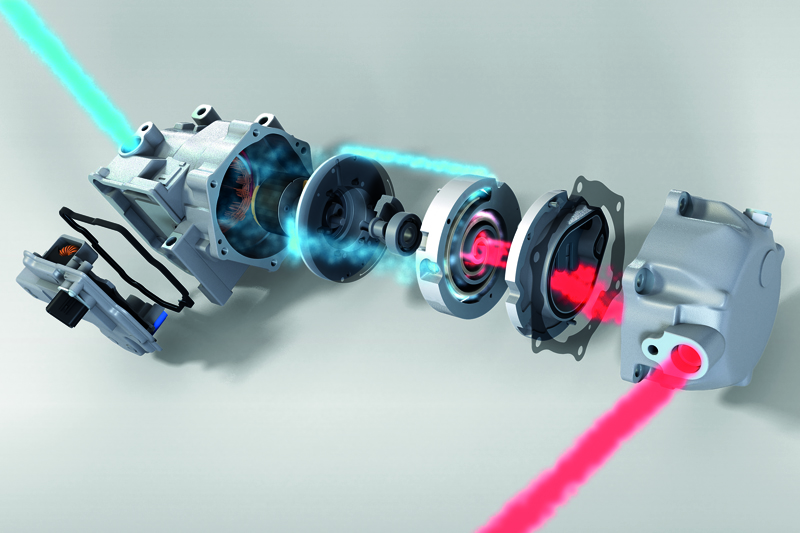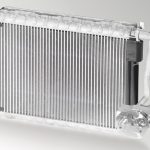As an intermediate step towards pure electric, there are a growing number of vehicles that utilise hybrid technology, and these require technicians to adopt new solutions in order to service and repair their air conditioning and thermal management systems. Behr Hella explains.
While micro hybrids still use a 12V system, both mild and full hybrids vary between 42 and 150V, so great care is required when undertaking work on the vehicles. Such work may only be carried out by personnel who have been made aware of and trained in the dangers of these high- voltage systems by a certified ‘electrical technician for high-voltage systems’. Furthermore, it is absolutely essential that tools which meet the specifications of the hybrid vehicle manufacturer are used.
During an air conditioning check and service, it should be noted that the electrical air conditioning compressors are not lubricated with the common PAG oils. These do not have the necessary insulating properties, which is why POE oils are generally used.
When looking at the air conditioning system itself, technicians will be familiar with the conventional mechanically driven compressor that is directly dependent on the operation of the engine. However, although the compressor in a micro hybrid vehicle remains driven by a belt, the start/stop function causes a problem because when the vehicle comes to a halt and the engine is switched off, after just two seconds the temperature at the evaporator outlet of the air-conditioning system begins to increase. The associated slow rise in the temperature of the air blown in by the ventilation and the increase in humidity can be annoying for passengers.

To tackle this problem, cold accumulators, or storage evaporators, have been developed, comprising two blocks – an evaporator and an accumulator. The air conditioning refrigerant flows through both blocks in the start-up phase or when the engine is running. In the process, a latent medium in the evaporator is cooled until it freezes.
In the stop phase, however, the compressor is not driven and the warm air passing the evaporator cools, and heat is exchanged. This exchange lasts until the latent medium has completely melted. Once the engine restarts, the process begins again and after just one minute, the storage evaporator can start cooling the air again.
By contrast, in very warm weather, the only way to maintain interior cooling for vehicles that do not have a storage evaporator is for the engine to be started again after a short standstill time, somewhat defeating the emission/fuel saving benefits.
In full hybrid vehicles, the internal combustion engine is switched off during electrical driving. The residual heat in the water circuit is only sufficient to heat the interior for a short period. To provide aid, electrical positive temperature coefficient (PTC) heating elements, which take over the heating function, are employed. The principle is similar to that of a hairdryer, as the air taken in by the interior blower is heated as it passes the PTC elements and then flows into the interior.
As this specific example makes clear, continuous education is required for technicians to be able to maintain and repair the complex thermal management systems found in these vehicles, which is why Behr Hella Service has introduced its Advanced Training Academy (ATA). Although the academy focuses on giving technicians essential updates on the technical developments of the HVAC system, it is also designed to refresh their memories on existing challenges and highlights industry best practice.

Head of Business Development for Behr Hella Service, Steve Hudson, said: “This is a really exciting initiative for the workshop, as it solidifies their knowledge concerning the current systems – making them more confident in their abilities – and also teaches them new things about technologies they may not have yet come across, such as the hybrid examples here. The ATA training is available through motor factors, so workshops need to let their factor know their specific requirements and then the factor can liaise with Behr Hella Service”.










